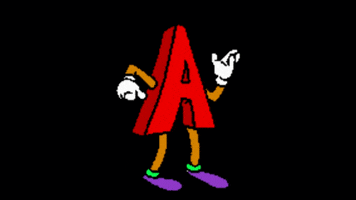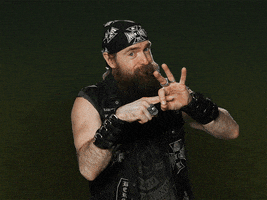Deleted member 10413
🌸🌼❤️✨👑✨❤️🌼🌸
- Joined
- Oct 23, 2020
- Posts
- 3,300
- Reputation
- 9,189
Open
Eyebrow Flash

Description: When someone does an eyebrow flash, you’ll typically see their eyebrows raise slightly for less than ⅕ of a second.
What it Means: The eyebrow raise is a great sign of interest. People tend to use the eyebrow flash in 3 main ways:
The eyebrow flash can show interest professionally, as when giving approval, agreeing to something, thanking someone, or seeking confirmation. It’s used as a nonverbal “yes” during conversation.
The eyebrow flash can also show interest romantically.
Or the eyebrow flash can show interest socially, as when 2 people recognize each other. It signals to the other person that you are happy to see them.
Whenever we use the eyebrow flash, we call attention to our face. Teachers and speakers often use it as a way to say, “Listen to this!” Or “Look at me!”
How to Use it: There are so many ways to use the eyebrow flash. Here are a few:
To Show Liking: When you see someone you like or who you want to like you, give them a quick eyebrow flash followed by a warm smile.
To Increase Engagement: If you want someone to listen to something you are about to say, raise your eyebrows right before you deliver.
To Show Interest: Are you curious? Your eyebrows are the best way to show it!
Equal Handshake

Description: An equal handshake has these 7 elements:
An equal handshake signals confidence, openness, and power during an interaction and leaves both interactants feeling warm and fuzzy inside.
How to Use it: Before shaking hands, consider the context. Salespeople learned early on that an uninvited or surprise handshake from nowhere was damaging to their sales—the buyer obviously didn’t welcome them, and they felt forced to shake hands.
Handshakes also aren’t universal—some cultures, like Japan, commonly bow as a greeting, and other cultures, like Italy or Spain, give a kiss on the cheek.
A good rule of thumb is to only shake hands when you know the other person will warmly reciprocate it. Otherwise, a head nod is a good option—or wait for the other person to initiate first.
On another important note, older people require less pressure, so avoid crushing their hand with your firm grip. When shaking hands with a higher-status individual, allow them to set the length and pressure of the handshake first, and follow up with an equal exchange for maximum bonding.
Authentic Mirroring
Mutual Gazing

Type: Interest
Description: Eye contact that is mutual—neither lacking eye contact or being a little… err, too interested.
What it Means: Longer eye contact, especially from people who are high-status, makes us feel favored. This is especially true when receiving eye contact from celebrities or movie stars.
Increased eye contact also indicates the other person may be curious, as when people are more attentive to their surroundings, their blink rate will generally decrease.
You want to do mutual gazing. Eye contact when you agree, when you are listening, when you are exchanging ideas, or when staring at your amazing self in the mirror:
The Science: Making eye contact just 30% of the time has been shown to significantly increase what people remember you say.
You can also give a boost to your perceived persuasiveness, truthfulness, sincerity, and credibility just by mutual eye gazing.
Interestingly, certain personality traits were found to relate to more mutual gazing—namely, extroversion, agreeableness, and openness.
How to Use it: Increase your eye gaze to bond. However, make sure to glance away occasionally, since too much eye contact can be seen as threatening and make people feel uncomfortable.
Real smile
Head tilt

Description: The head tilts to one side, exposing the neck.
What it Means: A head tilt is a sign of openness. Your neck is one of your most vulnerable areas. Neck skin is much thinner and requires protection. And exposing your neck and throat opens you up.
When someone tilts their head, they are showing that they’re comfortable enough to let their neck be exposed. You can often see head tilt (especially from women) when others are attracted to someone, although this can also be used to indicate platonic interest.
It can also show that someone is curious about what you’re saying, especially if you get the head tilt and head nod cluster:
The Science: Studies of paintings from the last 2,000 years show that women are depicted 3 times as often as men using head tilt.
How to Use it: Since this is a very powerful disarming behavior, you can tilt the head to the side, along with other open body language cues, to ease a tense situation or get someone to open up.
The head tilt is a very warm cue—it softens you. You want to be careful not to use it too much during sales pitches or meetings.
Shared laughter

Description: Simultaneous laughter shared between individuals in response to a joke or funny observation.
What it Means: When you crack a joke and the other person shares a laugh with you, this is a good sign that they are open to connecting with you. Laughter is meant to establish potential relationships or maintain existing ones, especially if the joke wasn’t particularly funny.
Laughter is also an indication that someone is relaxed, since stiff and nervous people usually do not laugh genuinely, or instead give a tense laugh if they are in a nervous situation.
How to Use it: Try incorporating humor into your conversations, such as giving the opposite answer to a yes/no question.
Example: If people are expecting you to say yes, say no; if people are expecting you to say no, say yes instead. It’s simple but effective.
Open palms

Type: Gesture
Description: When using hand gestures, make sure you display your palms and don’t hide them from others. Pockets, hands behind back, and closed fists can all act as barriers against open palms.
What it Means: People who display open palms are seen as honest and sincere:
And have you ever been in a situation where you met someone, and they seem nice, but something inside you felt a bit… off? It might have been that their palms weren’t showing.
Evolutionary, when we see closed palms, our brains receive signals that we might be in danger—after all, they could be brandishing a weapon or hiding something even more dangerous…
How to Use it: When gesturing with your hands, make sure your hands are open most of the time and people can see your open palms. It is also a good idea to keep the palms facing upward most of the time, rather than downward.

Description: When someone does an eyebrow flash, you’ll typically see their eyebrows raise slightly for less than ⅕ of a second.
What it Means: The eyebrow raise is a great sign of interest. People tend to use the eyebrow flash in 3 main ways:
The eyebrow flash can show interest professionally, as when giving approval, agreeing to something, thanking someone, or seeking confirmation. It’s used as a nonverbal “yes” during conversation.
The eyebrow flash can also show interest romantically.
Or the eyebrow flash can show interest socially, as when 2 people recognize each other. It signals to the other person that you are happy to see them.
Whenever we use the eyebrow flash, we call attention to our face. Teachers and speakers often use it as a way to say, “Listen to this!” Or “Look at me!”
How to Use it: There are so many ways to use the eyebrow flash. Here are a few:
To Show Liking: When you see someone you like or who you want to like you, give them a quick eyebrow flash followed by a warm smile.
To Increase Engagement: If you want someone to listen to something you are about to say, raise your eyebrows right before you deliver.
To Show Interest: Are you curious? Your eyebrows are the best way to show it!
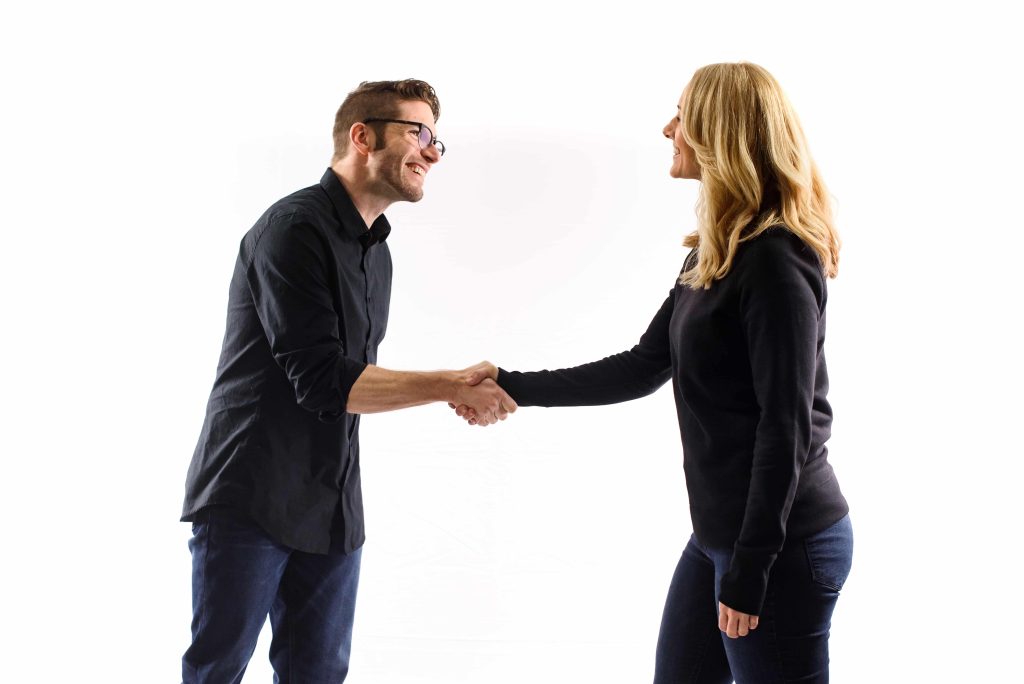
Description: An equal handshake has these 7 elements:
- good eye contact
- a warm, genuine smile
- an extended arm with a slight bend at the elbow
- fingers pointing downward while approaching the other person’s hand
- this one’s the big one—EQUAL pressure during the hand clasp
- slight forward lean toward the other person
- a slow release after 1–2 seconds
An equal handshake signals confidence, openness, and power during an interaction and leaves both interactants feeling warm and fuzzy inside.
How to Use it: Before shaking hands, consider the context. Salespeople learned early on that an uninvited or surprise handshake from nowhere was damaging to their sales—the buyer obviously didn’t welcome them, and they felt forced to shake hands.
Handshakes also aren’t universal—some cultures, like Japan, commonly bow as a greeting, and other cultures, like Italy or Spain, give a kiss on the cheek.
A good rule of thumb is to only shake hands when you know the other person will warmly reciprocate it. Otherwise, a head nod is a good option—or wait for the other person to initiate first.
On another important note, older people require less pressure, so avoid crushing their hand with your firm grip. When shaking hands with a higher-status individual, allow them to set the length and pressure of the handshake first, and follow up with an equal exchange for maximum bonding.
Description: Displaying similar body language to other interactants during a social situation.
What it Means: Mirroring is a highly rapport-building cue that signals a desire to connect with someone else. People tend to mirror only those they like, and seeing someone else mirror our own body language creates a feeling of similarity and likeness.
The Science: Mirroring is powerful. Studies have shown that mirroring leads to:
How to Use it: Make sure to mirror subtly. If someone nods their head vigorously in agreement, and you do the same, you may come off as too obvious—this can even lead to suspicion or decreased rapport.
What it Means: Mirroring is a highly rapport-building cue that signals a desire to connect with someone else. People tend to mirror only those they like, and seeing someone else mirror our own body language creates a feeling of similarity and likeness.
The Science: Mirroring is powerful. Studies have shown that mirroring leads to:
- Greater compliance from requests. So mirror if you want to persuade someone.
- Higher sales numbers. So be sure to mirror if you are in sales.
- Positive evaluations. So mirror your manager to build rapport.
- Even larger tips from customers!
- Mirroring others is literally hardwired into our brains. Professor Joseph Heinrich from the University of Michigan explains that mirroring others helps us cooperate—which leads to more food, better health, and economic growth for communities.
How to Use it: Make sure to mirror subtly. If someone nods their head vigorously in agreement, and you do the same, you may come off as too obvious—this can even lead to suspicion or decreased rapport.
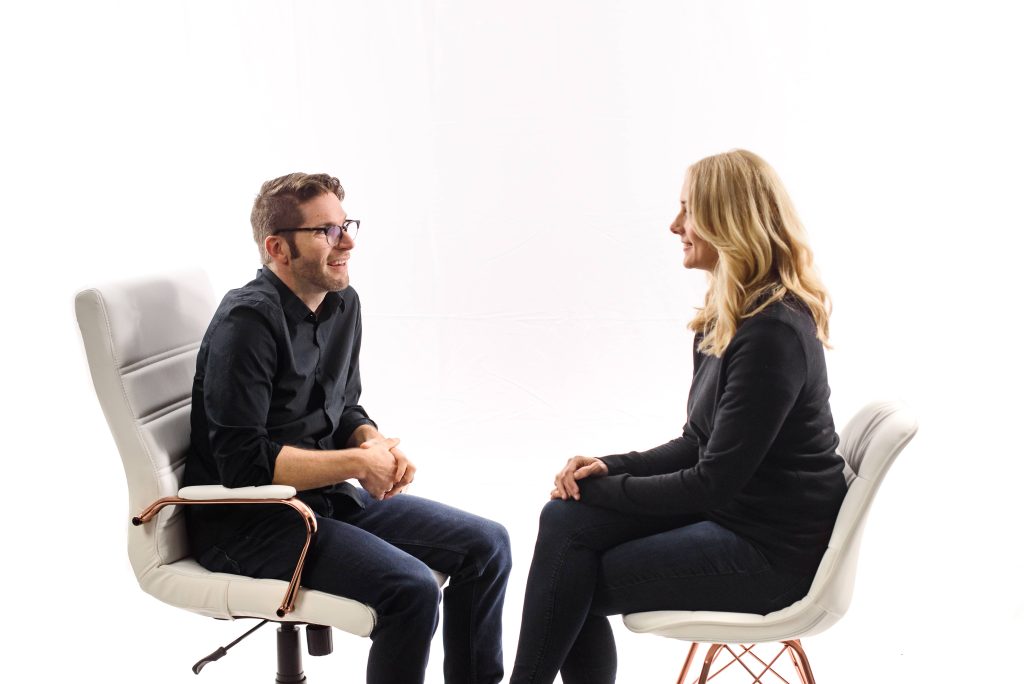
Type: Interest
Description: Eye contact that is mutual—neither lacking eye contact or being a little… err, too interested.
What it Means: Longer eye contact, especially from people who are high-status, makes us feel favored. This is especially true when receiving eye contact from celebrities or movie stars.
Increased eye contact also indicates the other person may be curious, as when people are more attentive to their surroundings, their blink rate will generally decrease.
You want to do mutual gazing. Eye contact when you agree, when you are listening, when you are exchanging ideas, or when staring at your amazing self in the mirror:
The Science: Making eye contact just 30% of the time has been shown to significantly increase what people remember you say.
You can also give a boost to your perceived persuasiveness, truthfulness, sincerity, and credibility just by mutual eye gazing.
Interestingly, certain personality traits were found to relate to more mutual gazing—namely, extroversion, agreeableness, and openness.
How to Use it: Increase your eye gaze to bond. However, make sure to glance away occasionally, since too much eye contact can be seen as threatening and make people feel uncomfortable.
Description: The genuine smile is a smile characterized by the “crow’s feet” wrinkles around the corners of the eyes along with upturned corners of the mouth. This is a real smile.
What it Means: When you see a genuine smile, this likely indicates genuine happiness.
It is difficult, but not impossible, to fake a real smile. In most cases, we smile dozens of times in normal conversation, but many of these smiles are given out of politeness or formality.
The Science: Research shows that babies several weeks old will already use the genuine smile for their mothers only, while using a more polite, social smile for others.
People also tend to smile more with others than when alone—in fact, when we see a smiling face, endorphins are released into our system.
Studies show that athletes will smile noticeably differently, whether they finish in first, second, or third place. This distinction was the same even in congenitally blind athletes who never even saw a smile before.
How to Use it: When smiling, remember to “smile with your eyes,” instead of just your mouth. It also helps to smile widely enough to bring the cheeks up, helping activate the muscles around your eyes. Remember to maintain the smile even after an encounter—in fake happiness encounters, you may often see an “on-off” smile that flashes and then vanishes quickly after 2 people go their separate ways
Example: In this example, George W. Bush flashes a childish Duchenne smile (“Oops, I got caught!”) when he tries to open a door, but fails:
What it Means: When you see a genuine smile, this likely indicates genuine happiness.
It is difficult, but not impossible, to fake a real smile. In most cases, we smile dozens of times in normal conversation, but many of these smiles are given out of politeness or formality.
The Science: Research shows that babies several weeks old will already use the genuine smile for their mothers only, while using a more polite, social smile for others.
People also tend to smile more with others than when alone—in fact, when we see a smiling face, endorphins are released into our system.
Studies show that athletes will smile noticeably differently, whether they finish in first, second, or third place. This distinction was the same even in congenitally blind athletes who never even saw a smile before.
How to Use it: When smiling, remember to “smile with your eyes,” instead of just your mouth. It also helps to smile widely enough to bring the cheeks up, helping activate the muscles around your eyes. Remember to maintain the smile even after an encounter—in fake happiness encounters, you may often see an “on-off” smile that flashes and then vanishes quickly after 2 people go their separate ways
Example: In this example, George W. Bush flashes a childish Duchenne smile (“Oops, I got caught!”) when he tries to open a door, but fails:
Head tilt

Description: The head tilts to one side, exposing the neck.
What it Means: A head tilt is a sign of openness. Your neck is one of your most vulnerable areas. Neck skin is much thinner and requires protection. And exposing your neck and throat opens you up.
When someone tilts their head, they are showing that they’re comfortable enough to let their neck be exposed. You can often see head tilt (especially from women) when others are attracted to someone, although this can also be used to indicate platonic interest.
It can also show that someone is curious about what you’re saying, especially if you get the head tilt and head nod cluster:
The Science: Studies of paintings from the last 2,000 years show that women are depicted 3 times as often as men using head tilt.
How to Use it: Since this is a very powerful disarming behavior, you can tilt the head to the side, along with other open body language cues, to ease a tense situation or get someone to open up.
The head tilt is a very warm cue—it softens you. You want to be careful not to use it too much during sales pitches or meetings.
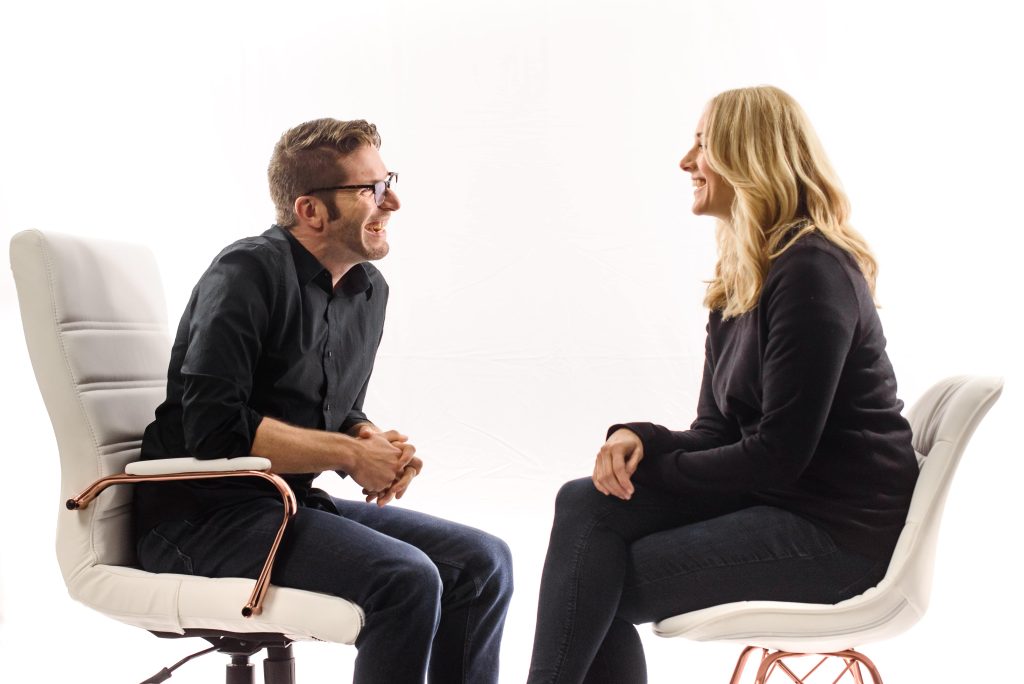
Description: Simultaneous laughter shared between individuals in response to a joke or funny observation.
What it Means: When you crack a joke and the other person shares a laugh with you, this is a good sign that they are open to connecting with you. Laughter is meant to establish potential relationships or maintain existing ones, especially if the joke wasn’t particularly funny.
Laughter is also an indication that someone is relaxed, since stiff and nervous people usually do not laugh genuinely, or instead give a tense laugh if they are in a nervous situation.
How to Use it: Try incorporating humor into your conversations, such as giving the opposite answer to a yes/no question.
Example: If people are expecting you to say yes, say no; if people are expecting you to say no, say yes instead. It’s simple but effective.
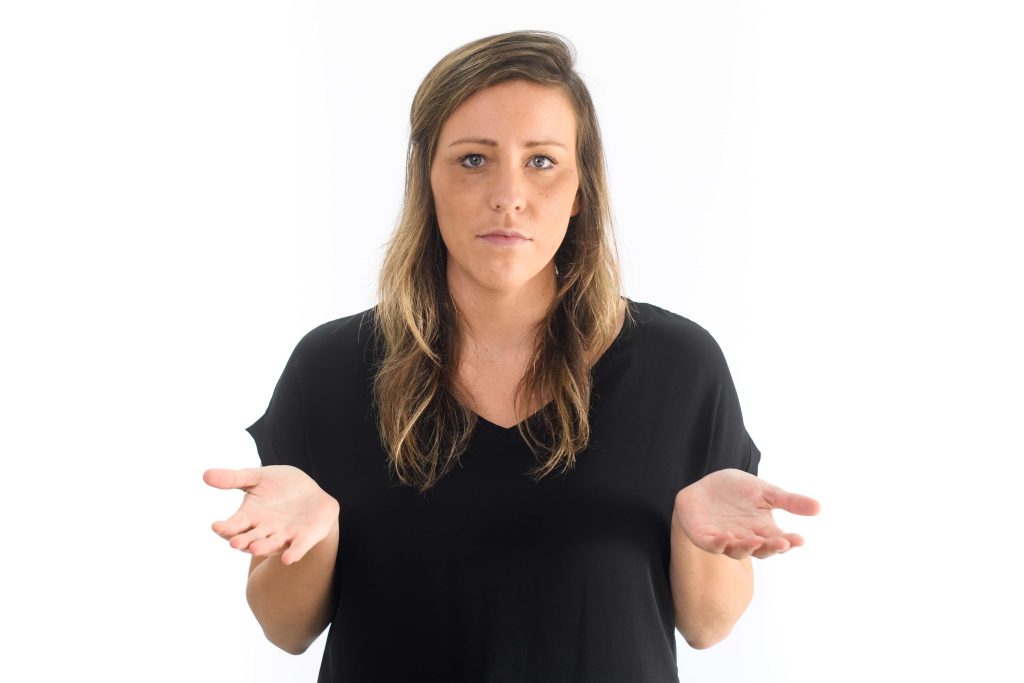
Type: Gesture
Description: When using hand gestures, make sure you display your palms and don’t hide them from others. Pockets, hands behind back, and closed fists can all act as barriers against open palms.
What it Means: People who display open palms are seen as honest and sincere:
And have you ever been in a situation where you met someone, and they seem nice, but something inside you felt a bit… off? It might have been that their palms weren’t showing.
Evolutionary, when we see closed palms, our brains receive signals that we might be in danger—after all, they could be brandishing a weapon or hiding something even more dangerous…
How to Use it: When gesturing with your hands, make sure your hands are open most of the time and people can see your open palms. It is also a good idea to keep the palms facing upward most of the time, rather than downward.
Closed
Crossed ankles
Hands clasping

Description: You know that affectionate, tender feeling of holding hands with a significant other?
Well, sometimes we don’t have that option (there’s no shame in that!). In these cases, we might choose to hold our own hand. Sometimes we interlace our fingers, and other times we hug one hand on top of the other.
Here’s an interesting fact: every time we interlock our fingers, one thumb is on top, and this is our dominant thumb4. For most people, it feels super weird if we switch thumbs and put our dominant one underneath!
What it Means: Interlaced fingers are a form of “self-hug.” Essentially, people who perform this gesture are comforting themselves with their hands, and it acts as a nostalgic reminder of the security we felt when holding hands with our parents as kids.
As adults, we do this when we’re insecure—you’ll find this during overly formal events or when meeting a nervous client at work.
How to Use it: Use this gesture if you want to conclude a meeting or end an interaction with someone. If you want to appear confident, you can even use this cue but with your thumbs stuck out—this signals confidence instead of stress.
If you see someone with interlaced fingers and want to open them up, try humor. Once they start laughing, you’ll see their body language start opening up!
Blading

Description: Have you ever seen a fencing bout before? These guys are on their feet, constantly moving back and forth in a game of who-can-stab-the-other-guy-first. It’s basically chess but with swords.
But the way that fencers use their stance is exactly what people do when closing off. When blading, the torso is turned away, maximizing reach in case violence occurs, while minimizing damage to the oh-so-vulnerable frontal parts.
Since up to 90% of people are right-handed, when you see blading, the left foot (which is also non-dominant in most cases) is usually the one that steps forward, or the right foot may step backward.
What it Means: Blading can commonly be seen right before a fight begins. You can see it before a bar fight breaks loose, during a boxing match, or if you made a statement your conversation partner disagrees with.
If you’re talking to a buddy in a front-to-front situation, and you see him blade all of a sudden, he might be feeling a bit defensive or threatened.
An exception to blading is when both people are observing an event and square up shoulder-to-shoulder, such as sitting on the couch and watching TV together.
Thumbs hidden

Description: The thumbs are hidden away from view, such as inside pockets or even wrapped around the other fingers.
What it Means: Usually a display of lower self-confidence, hiding thumbs usually signals concern, insecurity, or feelings of threat. High-status people have been observed to do this sometimes when relaxing but never when they’re “on.”
How to Use it: Around close friends and trusted others, it’s totally fine to relax your hands in your pockets once in a while. But if you want to make the other person feel a bit insecure for whatever reason, sticking your hands deep in your pockets is a surefire way to do it!
Neckrubbing

Description: When people rub their necks, they’ll usually do it on the side or back of the neck. In more extreme cases, you’ll see the suprasternal notch, or the part where your neck meets your clavicle, being touched (usually more in women).
What it Means: People usually rub their neck when feeling insecure or stressed. For some people, this is their go-to method to relieve stress.
Those who habitually rub the neck also have a tendency to be more negative or critical1 than others.
The Science: When the nerve on the side of the neck called the vagus nerve is massaged, acetylcholine, a neurotransmitter that sends signals to the heart, causes the heart rate to go down.
Crossed arms

Description: Chances are, you know this one. Practically everyone has crossed their arms at some point or another.
What it Means: Most people who do this are projecting anger, anxiety, or stress—it’s also known as the “self-hug”2.
That’s why people will usually cross their arms only in public and not when alone. You’ll see it often in public, such as in line at the DMV, in doctors’ and dentists’ waiting rooms, or with first-time air travelers.
People who are feeling angry, hostile, or defensive may clench their fists and even combine this gesture with a tight-lipped smile or clenched teeth.
How to Disarm it: If you see someone with this gesture, you can break their barrier by giving them something to hold onto1—a pen, book, coffee, or brochure will work just fine. You can also ask them to lean forward to look at something to open their arms up.
Example: Right before a tug-of-war competition, most of the men on a tug-of-war team face off against 4 big Strongman competitors. Their crossed arms are a dead giveaway that they’re feeling tension from the upcoming struggle:
Hunched Shoulders

Description: How many times have you heard “shoulders back, head straight!”
Believe it or not, hunched shoulders are becoming even more common nowadays, as you’ll see people slumped over, looking at their cellphones. Over time, this might even become the norm, as people develop chronically-hunched shoulders from staring at smartphones and hunched over laptops all day.
People who are super submissive in social situations, like those with clinical depression or self-proclaimed “social failures,” may also walk with a permanent stoop, with shoulders rounded and their neck hunched forward.
Meaning: This is a naturally defensive posture. Forward shoulders may indicate that someone is trying to hide something or feeling vulnerable, since you are closing off your vulnerable neck and chest areas.
Rubbing Eyes

Description: People who rub their eyes usually use their index finger, middle, or thumb to get in on that eyelid action. It can range either from a gentle, split-second touch, to more obvious rubbing, to a very obvious, angry, it’s-raw type of face/eye rubbing.
What it Means: Rubbing the eyelids really helps people calm down, as it acts like a “visual reset.” Essentially, what you’re saying when you rub your eyes is: “Look, please go away. I wish everything in front of me just “vanished.” You’ll typically see this gesture with high-stakes poker players as soon as they lose a hand, or during an argument between an angry and frustrated couple.
Of course, people naturally do this to get those nasty eye boogies out, too, so always take into account how tired someone is, before placing a negative label on them.
The Science: Rubbing the eyelids stimulates a special nerve in the eyelids called the vagus nerve, which helps slow down heart and breathing rates when it’s massaged.
You can also see people do this during conversations and interrogations when they are asked a difficult or stress-inducing question, and if they want to cut off eye contact to reduce their own stress or anxiety.
You may often see this gesture more in men than women, as women might be conditioned to avoid rubbing their eyes, especially if they wear eye makeup.
How to Use It: Having a hard day at work? Try closing your eyes in a safe space and gently rubbing your eyelids while taking a breath. I’ve found just 30 seconds of this helps immensely and gives a sense of calm during a stressful day.
Fidgeting with objects
Touching ears

Description: The ear is rubbed, pulled, scratched, touched, picked at… or rubbed vigorously.
What it Means: OK, you might have noticed a trend by now—touching yourself basically means anxiety. Not in all cases, but unless you’ve just got an itch that won’t go away, repetitive self-touch in all forms is a way to ease tension throughout your body.
Effectively, people who do this may be trying to “block” information that they’ve just heard—whether it’s a prodding question, or even if they’ve been accused.
What it Means: A person crossing their ankles might feel uncomfortable and closed-off, although there is an exception (I’ll talk about that below). The tighter their ankles are locked, the more anxiety or stress the person may be experiencing.
Women often sit with their ankles locked, especially if they are wearing a skirt. However, it is unnatural to sit like this for a prolonged period of time and should be considered strange, especially if done by males.
The big exception to this rule is if you see the ankles crossed while legs are outstretched on the floor. This can be a relaxed posture with the legs taking up space.
The Science: In a study of 319 dental patients, ankle locking was a common body language cue done by most patients: 68% of patients getting a checkup locked their ankles, 89% of patients locked their ankles as soon as they sat in their chair to get some dental work done, and a whopping 98% of them ankle-locked when they received an injection.
Women often sit with their ankles locked, especially if they are wearing a skirt. However, it is unnatural to sit like this for a prolonged period of time and should be considered strange, especially if done by males.
The big exception to this rule is if you see the ankles crossed while legs are outstretched on the floor. This can be a relaxed posture with the legs taking up space.
The Science: In a study of 319 dental patients, ankle locking was a common body language cue done by most patients: 68% of patients getting a checkup locked their ankles, 89% of patients locked their ankles as soon as they sat in their chair to get some dental work done, and a whopping 98% of them ankle-locked when they received an injection.

Description: You know that affectionate, tender feeling of holding hands with a significant other?
Well, sometimes we don’t have that option (there’s no shame in that!). In these cases, we might choose to hold our own hand. Sometimes we interlace our fingers, and other times we hug one hand on top of the other.
Here’s an interesting fact: every time we interlock our fingers, one thumb is on top, and this is our dominant thumb4. For most people, it feels super weird if we switch thumbs and put our dominant one underneath!
What it Means: Interlaced fingers are a form of “self-hug.” Essentially, people who perform this gesture are comforting themselves with their hands, and it acts as a nostalgic reminder of the security we felt when holding hands with our parents as kids.
As adults, we do this when we’re insecure—you’ll find this during overly formal events or when meeting a nervous client at work.
How to Use it: Use this gesture if you want to conclude a meeting or end an interaction with someone. If you want to appear confident, you can even use this cue but with your thumbs stuck out—this signals confidence instead of stress.
If you see someone with interlaced fingers and want to open them up, try humor. Once they start laughing, you’ll see their body language start opening up!

Description: Have you ever seen a fencing bout before? These guys are on their feet, constantly moving back and forth in a game of who-can-stab-the-other-guy-first. It’s basically chess but with swords.
But the way that fencers use their stance is exactly what people do when closing off. When blading, the torso is turned away, maximizing reach in case violence occurs, while minimizing damage to the oh-so-vulnerable frontal parts.
Since up to 90% of people are right-handed, when you see blading, the left foot (which is also non-dominant in most cases) is usually the one that steps forward, or the right foot may step backward.
What it Means: Blading can commonly be seen right before a fight begins. You can see it before a bar fight breaks loose, during a boxing match, or if you made a statement your conversation partner disagrees with.
If you’re talking to a buddy in a front-to-front situation, and you see him blade all of a sudden, he might be feeling a bit defensive or threatened.
An exception to blading is when both people are observing an event and square up shoulder-to-shoulder, such as sitting on the couch and watching TV together.
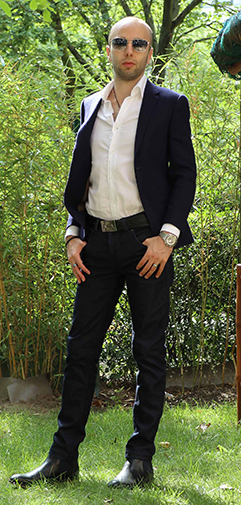
Description: The thumbs are hidden away from view, such as inside pockets or even wrapped around the other fingers.
What it Means: Usually a display of lower self-confidence, hiding thumbs usually signals concern, insecurity, or feelings of threat. High-status people have been observed to do this sometimes when relaxing but never when they’re “on.”
How to Use it: Around close friends and trusted others, it’s totally fine to relax your hands in your pockets once in a while. But if you want to make the other person feel a bit insecure for whatever reason, sticking your hands deep in your pockets is a surefire way to do it!
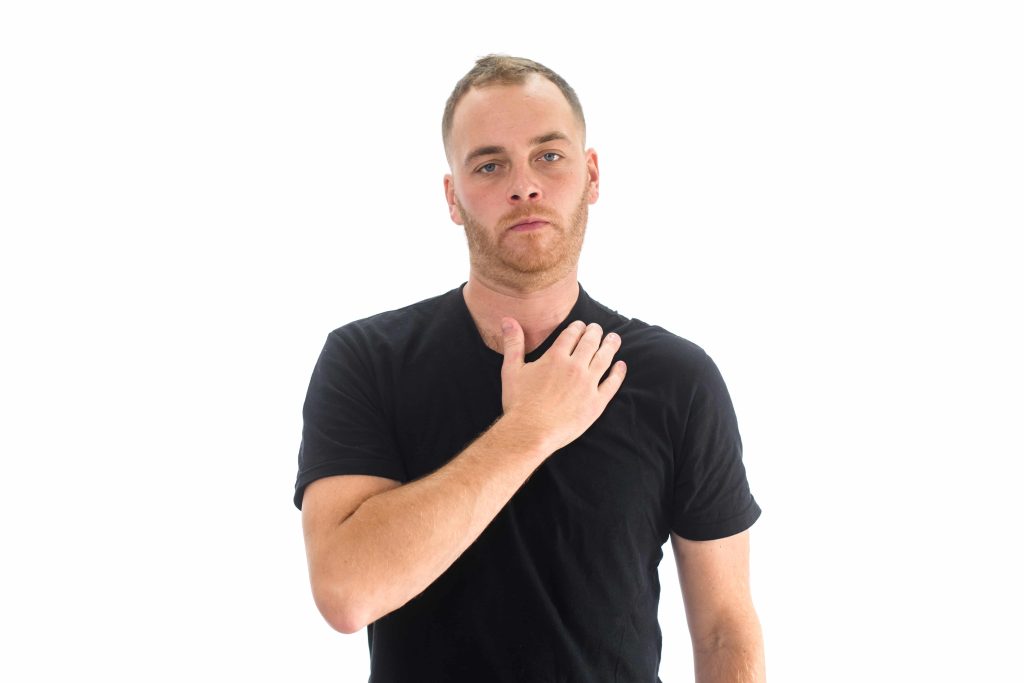
Description: When people rub their necks, they’ll usually do it on the side or back of the neck. In more extreme cases, you’ll see the suprasternal notch, or the part where your neck meets your clavicle, being touched (usually more in women).
What it Means: People usually rub their neck when feeling insecure or stressed. For some people, this is their go-to method to relieve stress.
Those who habitually rub the neck also have a tendency to be more negative or critical1 than others.
The Science: When the nerve on the side of the neck called the vagus nerve is massaged, acetylcholine, a neurotransmitter that sends signals to the heart, causes the heart rate to go down.
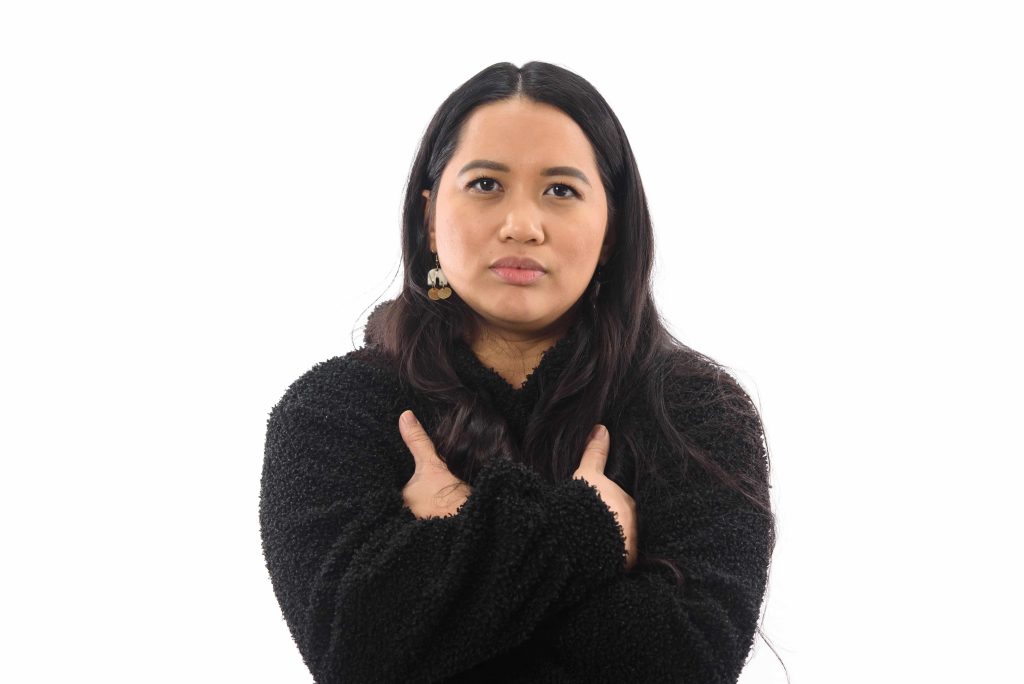
Description: Chances are, you know this one. Practically everyone has crossed their arms at some point or another.
What it Means: Most people who do this are projecting anger, anxiety, or stress—it’s also known as the “self-hug”2.
That’s why people will usually cross their arms only in public and not when alone. You’ll see it often in public, such as in line at the DMV, in doctors’ and dentists’ waiting rooms, or with first-time air travelers.
People who are feeling angry, hostile, or defensive may clench their fists and even combine this gesture with a tight-lipped smile or clenched teeth.
How to Disarm it: If you see someone with this gesture, you can break their barrier by giving them something to hold onto1—a pen, book, coffee, or brochure will work just fine. You can also ask them to lean forward to look at something to open their arms up.
Example: Right before a tug-of-war competition, most of the men on a tug-of-war team face off against 4 big Strongman competitors. Their crossed arms are a dead giveaway that they’re feeling tension from the upcoming struggle:
Hunched Shoulders
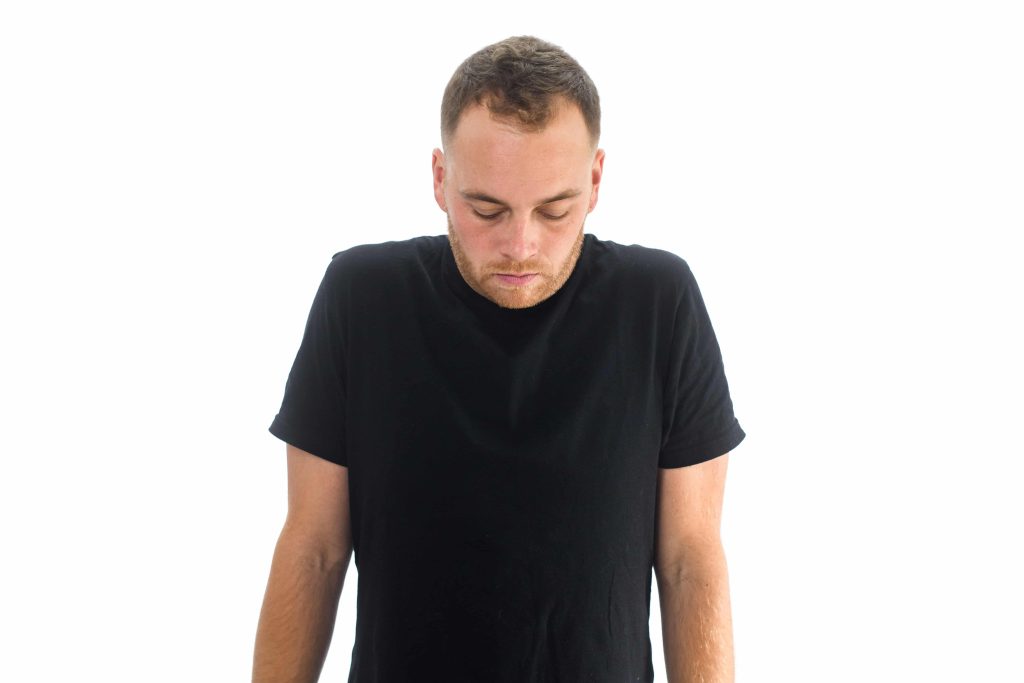
Description: How many times have you heard “shoulders back, head straight!”
Believe it or not, hunched shoulders are becoming even more common nowadays, as you’ll see people slumped over, looking at their cellphones. Over time, this might even become the norm, as people develop chronically-hunched shoulders from staring at smartphones and hunched over laptops all day.
People who are super submissive in social situations, like those with clinical depression or self-proclaimed “social failures,” may also walk with a permanent stoop, with shoulders rounded and their neck hunched forward.
Meaning: This is a naturally defensive posture. Forward shoulders may indicate that someone is trying to hide something or feeling vulnerable, since you are closing off your vulnerable neck and chest areas.

Description: People who rub their eyes usually use their index finger, middle, or thumb to get in on that eyelid action. It can range either from a gentle, split-second touch, to more obvious rubbing, to a very obvious, angry, it’s-raw type of face/eye rubbing.
What it Means: Rubbing the eyelids really helps people calm down, as it acts like a “visual reset.” Essentially, what you’re saying when you rub your eyes is: “Look, please go away. I wish everything in front of me just “vanished.” You’ll typically see this gesture with high-stakes poker players as soon as they lose a hand, or during an argument between an angry and frustrated couple.
Of course, people naturally do this to get those nasty eye boogies out, too, so always take into account how tired someone is, before placing a negative label on them.
The Science: Rubbing the eyelids stimulates a special nerve in the eyelids called the vagus nerve, which helps slow down heart and breathing rates when it’s massaged.
You can also see people do this during conversations and interrogations when they are asked a difficult or stress-inducing question, and if they want to cut off eye contact to reduce their own stress or anxiety.
You may often see this gesture more in men than women, as women might be conditioned to avoid rubbing their eyes, especially if they wear eye makeup.
How to Use It: Having a hard day at work? Try closing your eyes in a safe space and gently rubbing your eyelids while taking a breath. I’ve found just 30 seconds of this helps immensely and gives a sense of calm during a stressful day.
Description: Fidgeting involves playing with nearby objects, such as keys, coins, a pen, a ring, or a necklace.
What it Means: Fidgeting typically signals boredom. Bored of talking, bored of sitting down, and yes—even bored of you (ouch!).
People who fidget may be subconsciously desiring sensory reassurance, similar to how babies hold onto their favorite toy. Other times, it may mean that people are anxious or short on time.
The Science: Observations at railway stations and airports revealed that there are 10x as many displacement activities in flying situations. In other words, people fidget a lot when they’re about to fly. These behaviors include:
How to Use it: If you want an easy out to a conversation, just start jangling your keys or coins in your pocket or hands. It might be a bit rude, but if you’ve really gotta go, this is a great way to end a conversation.
What it Means: Fidgeting typically signals boredom. Bored of talking, bored of sitting down, and yes—even bored of you (ouch!).
People who fidget may be subconsciously desiring sensory reassurance, similar to how babies hold onto their favorite toy. Other times, it may mean that people are anxious or short on time.
The Science: Observations at railway stations and airports revealed that there are 10x as many displacement activities in flying situations. In other words, people fidget a lot when they’re about to fly. These behaviors include:
- Checking tickets
- Taking out passports and putting them away
- Rearranging hand baggage
- Making sure their wallet is in place
- Dropping things and picking them up
- In contrast, only 8% of people boarding a train showed signs of fidgeting, compared to 80% of people at a check-in desk of a jumbo-jet flight across the Atlantic.
How to Use it: If you want an easy out to a conversation, just start jangling your keys or coins in your pocket or hands. It might be a bit rude, but if you’ve really gotta go, this is a great way to end a conversation.

Description: The ear is rubbed, pulled, scratched, touched, picked at… or rubbed vigorously.
What it Means: OK, you might have noticed a trend by now—touching yourself basically means anxiety. Not in all cases, but unless you’ve just got an itch that won’t go away, repetitive self-touch in all forms is a way to ease tension throughout your body.
Effectively, people who do this may be trying to “block” information that they’ve just heard—whether it’s a prodding question, or even if they’ve been accused.
Extra Note:
I pulled most of the info from here: (https://www.scienceofpeople.com/body-language-examples/#content) feel free to check it out. It's painfully long and my formatting is way better though.
Tags:
@Inscol @TheEndHasNoEnd @Danish_Retard @PrestonYnot @SaqMadeek @Michael James @FraudingIQ @Albeacho @Blue @BigBiceps @Madhate @Danish_Retard @GigaChang @Blue
Previous Part(s):
Last edited:


